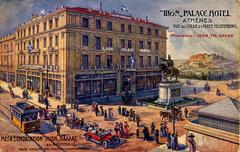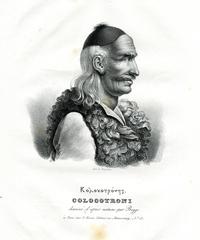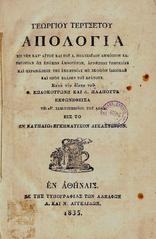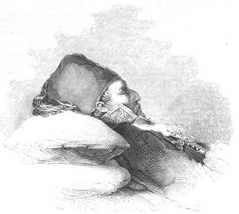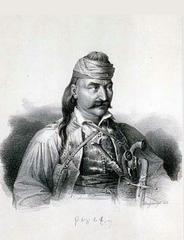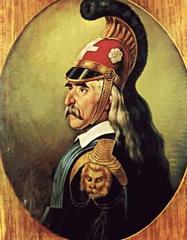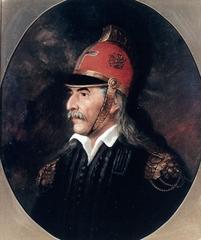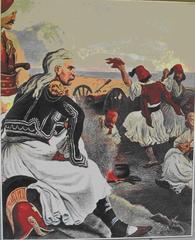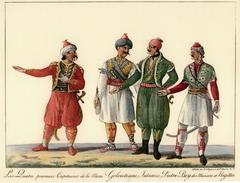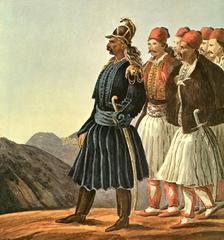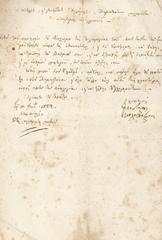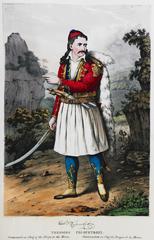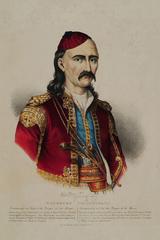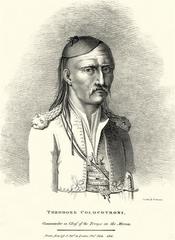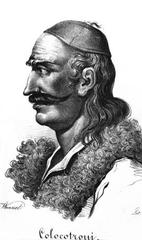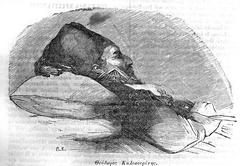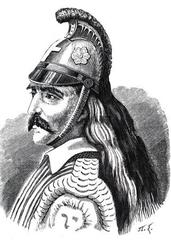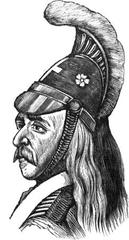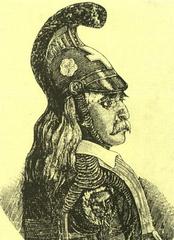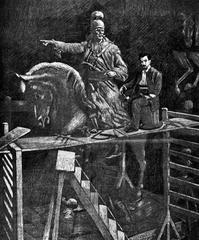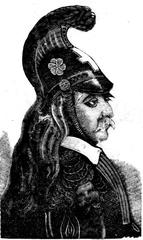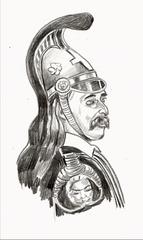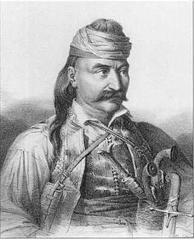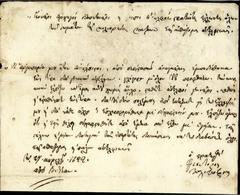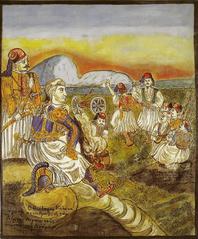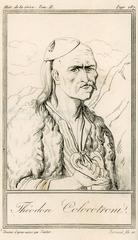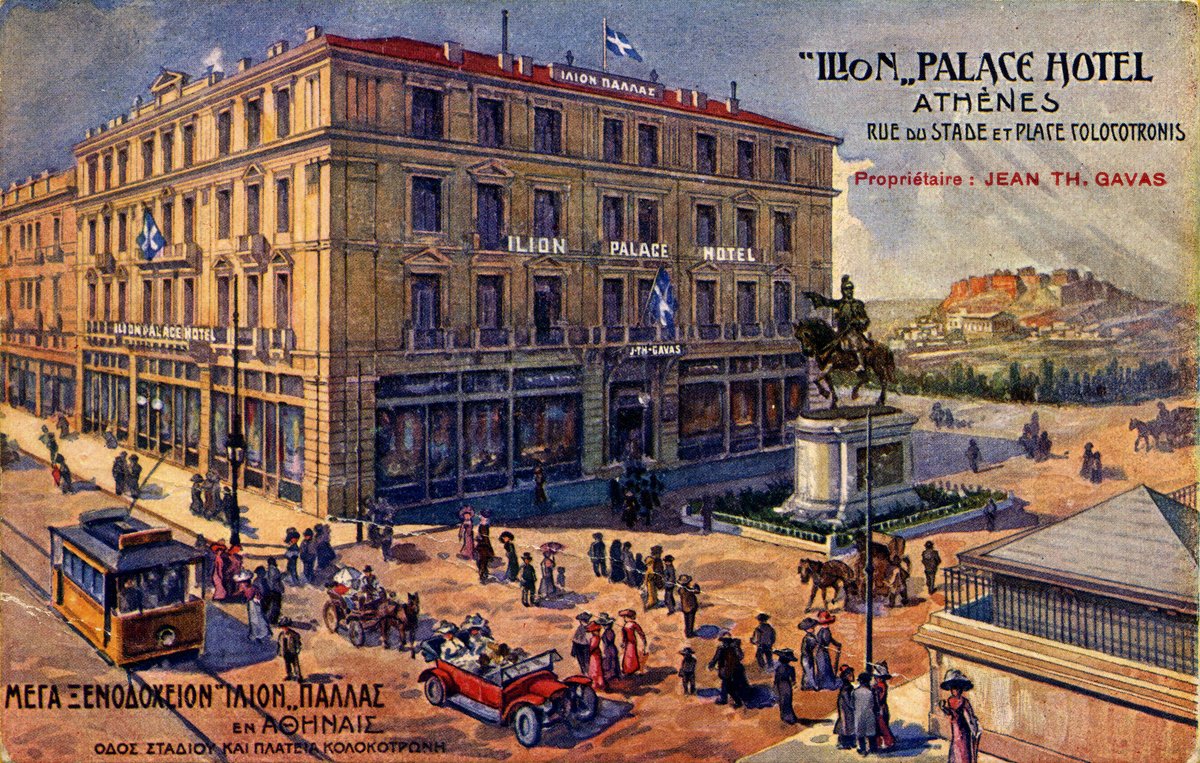
Theodoros Kolokotronis Monument: Visiting Hours, Tickets & Comprehensive Guide to Athens Historical Sites
Date: 14/06/2025
Introduction: The Monument and Its Significance
The Theodoros Kolokotronis Monument stands proudly in the heart of Athens, serving as a lasting tribute to one of Greece’s most celebrated heroes of the Greek War of Independence. Located in Kolokotronis Square, directly in front of the historic Old Parliament House (now the National Historical Museum), this imposing equestrian statue commemorates Kolokotronis’ crucial role in the nation’s fight for freedom from Ottoman rule. The monument not only honors his military leadership but also anchors a vibrant area rich with Greek history, culture, and civic life (National Historical Museum Athens, Visit Greece, Travel.gr).
This guide provides a detailed overview of the monument’s historical and cultural context, practical information for visitors—including hours, ticketing, accessibility, and transport—along with tips for exploring nearby attractions and making the most of your visit to this essential Athens landmark.
Contents
- Historical Background
- Early Life & Family Heritage
- Military Experience & Influences
- Leadership in the War of Independence
- Political Role & Legacy
- The Monument: Artistic & Symbolic Features
- Visitor Information: Hours, Tickets, Accessibility & Getting There
- Nearby Sites & Amenities
- Cultural Importance & Commemoration
- FAQ
- Conclusion
- Official Sources
Historical Background
Early Life & Family Heritage
Born in 1770 in Messenia, Theodoros Kolokotronis was raised in a family renowned for resisting Ottoman domination. The Kolokotronis clan, famous klephts (mountain insurgents), endured generations of conflict and loss—over 80 family members were killed by Ottoman forces. This legacy of resistance was memorialized in Greek folk songs and instilled in Theodoros a profound sense of national identity and duty.
Military Experience & Influences
Kolokotronis’ formative years were shaped by guerrilla warfare and military hardship. He fought as a klepht, later gaining military experience in the Russian Navy and the British Army in the Ionian Islands. Exposure to Western military tactics and the revolutionary ideals of Europe, especially those inspired by the French Revolution, broadened his strategic outlook and leadership abilities.
Leadership in the War of Independence
At 50, Kolokotronis became the de facto leader of the Greek revolutionary forces in the Peloponnese. He masterminded the pivotal siege and capture of Tripolitsa in 1821, a victory that significantly shifted the tide of the Greek War of Independence. Known as the “brain of the war,” he unified rival factions and demonstrated exceptional military acumen, earning comparisons to Odysseus for his cunning and perseverance.
Political Role & Legacy
After the war, Kolokotronis played a key political role in the nascent Greek state, supporting early leaders and advocating for foreign alliances. His relationship with the ruling regency led to imprisonment, but he was later pardoned and spent his final years as a revered figure in Athens. Kolokotronis died in 1843, his legacy forever tied to the birth of modern Greece.
The Theodoros Kolokotronis Monument: Artistic & Symbolic Features
Design & Location
Unveiled in 1904, the bronze equestrian statue of Theodoros Kolokotronis was sculpted by Lazaros Sochos. It depicts Kolokotronis in traditional military dress, astride a powerful horse, with his right arm outstretched—an iconic gesture symbolizing leadership and vision (travel.gr). The statue rests on a marble pedestal, linking the revolutionary hero to Greece’s ancient heritage.
Symbolism
- Equestrian Pose: Military leadership and heroism
- Outstretched Arm: Defiance and hope
- Traditional Attire: Authenticity and connection to the Greek people
- Inscription: “Ride on, oh Brave General, on the back of your horse, teaching the nations through the centuries, as to how slaves can become free men” (exploringgreece.tv)
The monument’s placement before the Old Parliament House, itself a symbol of Greek democracy, reinforces Kolokotronis’ enduring influence on the nation’s civic life (Wikipedia).
Visitor Information
Visiting Hours & Admission
- Monument: Open 24/7, as it is situated outdoors in Kolokotronis Square (militarytourism.warmuseum.gr)
- National Historical Museum (Old Parliament):
- Open Tuesday to Sunday, 9:00–14:00 (closed Mondays and public holidays; check official website for updates)
- Standard adult ticket: approx. €6; discounts for students, seniors, and children
Accessibility
- Monument Area: Wheelchair accessible with ramps and smooth pavements (militarytourism.warmuseum.gr)
- Museum: Accessible entrances, elevators, and restrooms; some historic rooms may have limited access
Getting There
- Metro: Syntagma (Lines 2 & 3), Panepistimio (Line 2), and Omonia (Line 1) stations are nearby
- Bus & Tram: Many lines serve Stadiou Street and Syntagma Square (davestravelpages.com)
- Taxi: Widely available—ask for “Stadiou 13, Kolokotroni Square”
- On Foot: Easily reached from Plaka, Monastiraki, and Syntagma Square
Best Times to Visit
- Early morning or late afternoon for optimal lighting and fewer crowds
- National holidays (e.g., March 25, Greek Independence Day) for ceremonies and commemorative events
Nearby Sites & Amenities
- National Historical Museum: Artifacts from the Greek Revolution, including Kolokotronis’ personal items (National Historical Museum)
- Syntagma Square: Parliament building and the ceremonial changing of the guard
- Ermou Street: Popular pedestrian shopping street
- Plaka & Monastiraki: Historic districts with shops, cafes, and neoclassical architecture
- Cafés & Restaurants: Abundant options around the square and adjacent streets
Cultural Importance & Commemoration
Kolokotronis’ memory is honored annually, especially on Greek Independence Day (March 25), when wreath-laying ceremonies and public gatherings are held at the monument. The site is a focal point for civic rituals and educational activities, reinforcing its role as a central landmark in Greek national identity (greekreporter.com, paigedevanneytravel.blogspot.com).
Frequently Asked Questions (FAQ)
Q: What are the monument’s visiting hours?
A: The monument is accessible 24/7.
Q: Is there an admission fee?
A: No, visiting the monument is free. The National Historical Museum charges a modest entrance fee.
Q: Is the site wheelchair accessible?
A: Yes, both the square and museum are accessible, though some old pavements may be uneven.
Q: Are guided tours available?
A: Many Athens walking tours include the monument; the museum offers official guided tours in Greek and English (evendo.com).
Q: How do I get there by public transport?
A: The nearest metro stations are Syntagma, Panepistimio, and Omonia. Numerous buses and trams serve the area.
Q: Is photography allowed?
A: Non-commercial photography is permitted and encouraged.
Conclusion
The Theodoros Kolokotronis Monument is an essential stop for anyone wishing to connect with Greece’s rich history and cultural heritage. Its central location, free access, and close proximity to other major attractions make it a highlight of any Athens itinerary. Whether you’re drawn by the power of the statue, the stories of the Greek Revolution, or the vibrant city atmosphere, a visit here offers a lasting and meaningful experience.
Ready to explore more? Download the Audiala app for interactive maps, expert guides, and exclusive content on Athens historical sites!
Official Sources and Further Information
- National Historical Museum Athens: Official Website
- Visit Greece
- Travel.gr: Best Monuments and Landmarks in Athens
- Greek Reporter: Theodoros Kolokotronis, Ultimate Symbol of Greek Revolution
- Dave’s Travel Pages: The National Historical Museum of Greece
- Military Tourism: Theodoros Kolokotronis Attraction
- Evendo: Commander in Chief Theodoros Kolokotronis Mounted
- Exploring Greece TV: The Stance of Kolokotronis’ Horse
- Wikipedia: Old Parliament House, Athens
- Paige Devanney Travel Blog: Theodoros Kolokotronis Prison
Image suggestion: Include a high-quality photo of the Theodoros Kolokotronis Monument with the Old Parliament House in the background. Alt text: “Equestrian statue of Theodoros Kolokotronis in Kolokotronis Square, Athens.”
